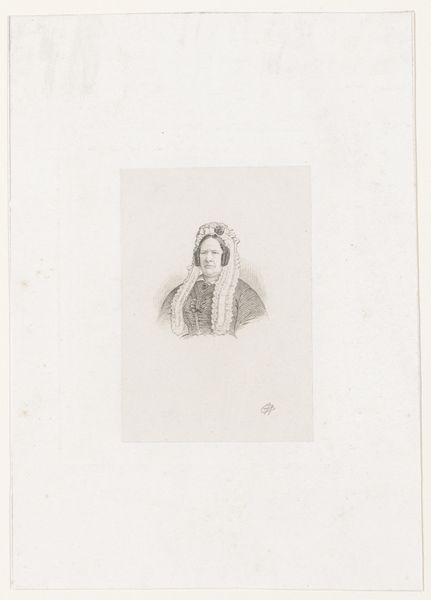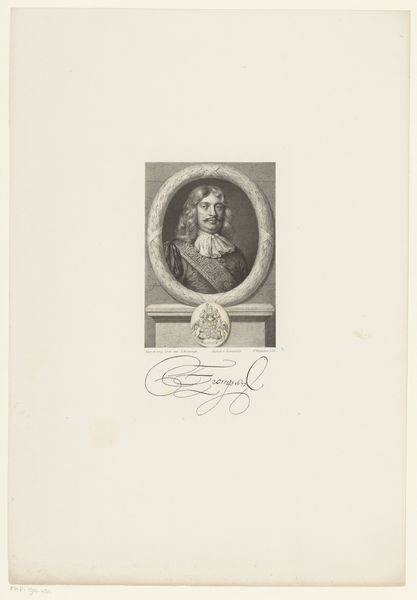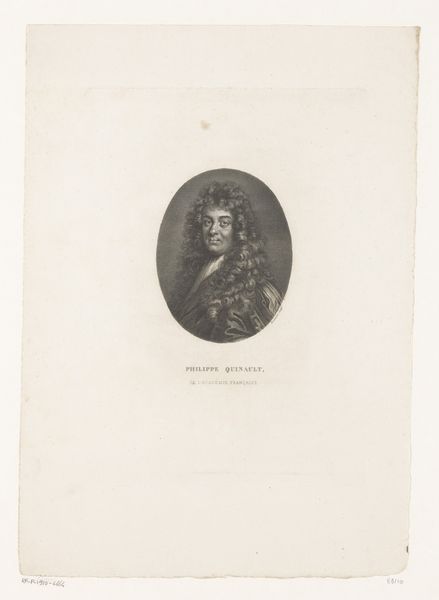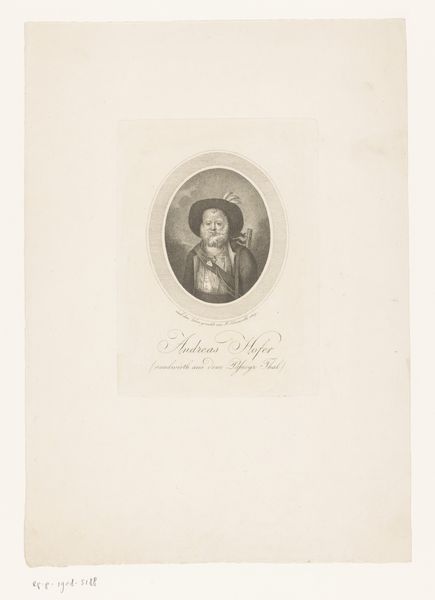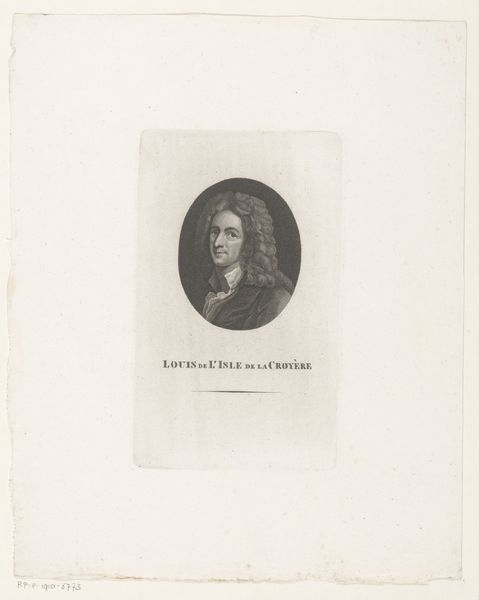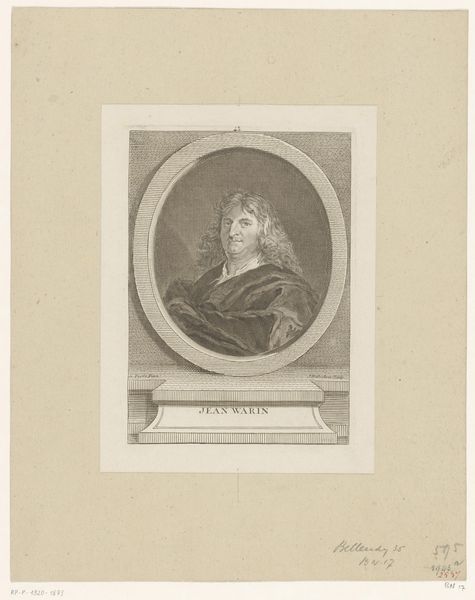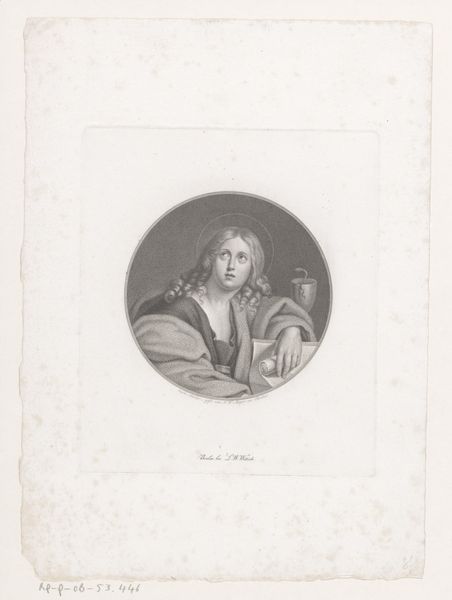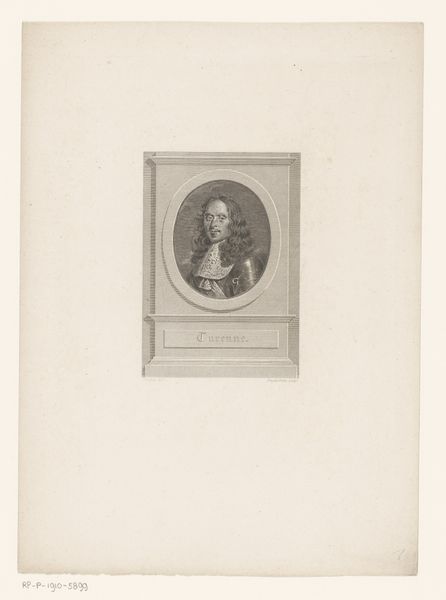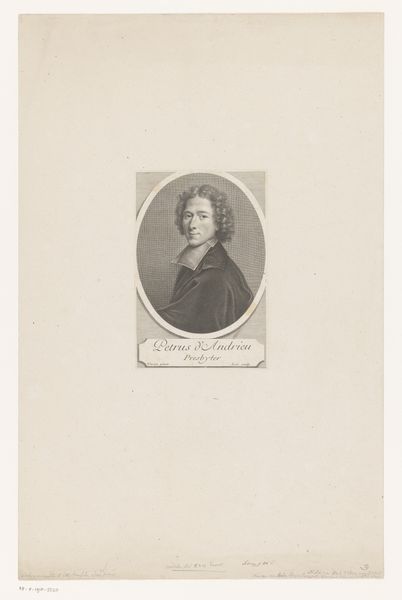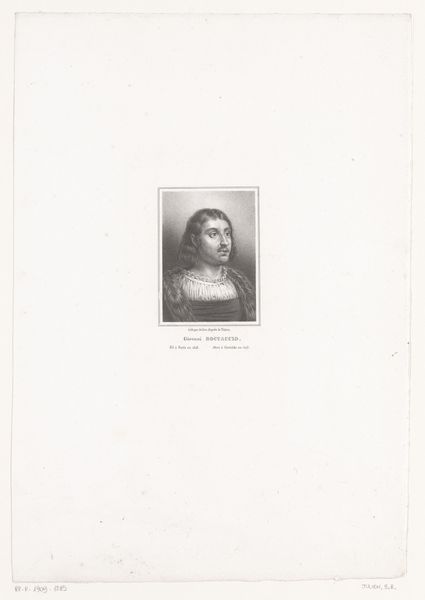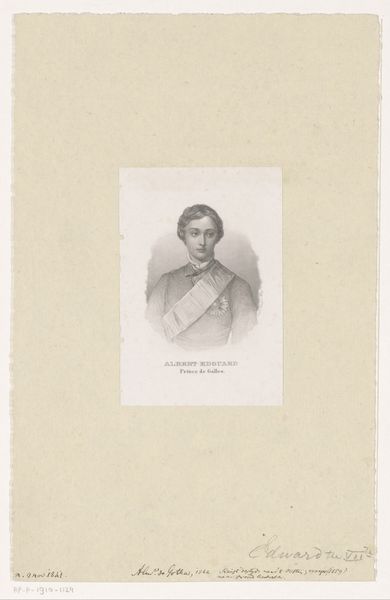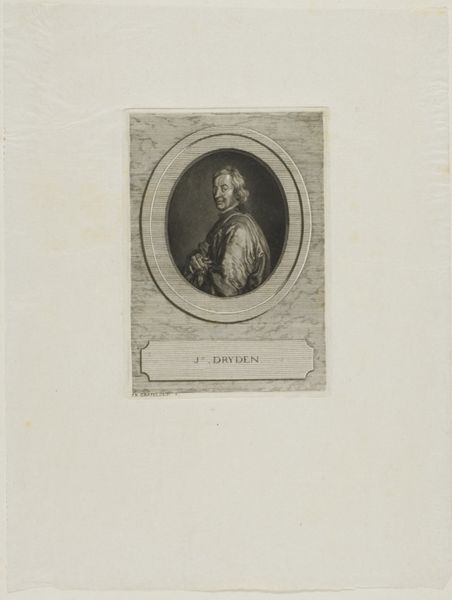
Dimensions: height 429 mm, width 294 mm
Copyright: Rijks Museum: Open Domain
Curator: Before us is Frederik Hendrik Weissenbruch's "Portret van Willem Joseph van Gendt," an engraving from the period of 1858 to 1862, currently residing here at the Rijksmuseum. The work showcases an intriguing composition, doesn't it? Editor: It does. My first impression is a somber formality, typical of portraiture, but with an interesting tension between the rigid presentation of status and the intimate details etched in ink. What narrative can be found beyond the sitter's proper affect? Curator: Indeed, Weissenbruch's expert use of line and shadow certainly dictates how one’s gaze is pulled towards details. Consider the subtle shading that gives volume to his face and armour, then how it compares to the detailed filigree in the wreath. The way the light catches reveals much of the subject and Weissenbruch's dedication to academic standards of realism. Editor: But can we contextualize it within the period it was created, between 1858 and 1862? During this time, the Netherlands experienced political reform and a growing middle class eager to emulate aristocratic symbolism. What narratives does the sitter perpetuate? I find myself wondering about his position within the societal strata of the time, beyond the suggestion of nobility hinted by the baroque style. Curator: Semiotically, it speaks of military prestige. Willem's armor paired with the ornate cartouche are meant to project authority and an imposing historical image that evokes Dutch pride in their navy’s might. What could be read from the use of such obvious signs? Editor: The careful detailing isn't only an indicator of prestige; I argue it served as a deliberate symbol of conservative values, presented in a time of evolving socio-political contexts. I wonder what intersectional considerations— gender, class, and perhaps colonialism given the history—might shed additional insight into this work? Curator: A valid interpretation, considering the historical factors present. From my view, though, what ultimately captivates is the almost sculptural rendering achieved purely through lines and crosshatching. The artist's craft is certainly thought-provoking and deserving of careful inspection. Editor: It's precisely this confluence of artistic intent, social commentary, and historical framework that makes encountering such pieces particularly resonant and significant to cultural critique. It beckons questions of power and self-regard even centuries later.
Comments
No comments
Be the first to comment and join the conversation on the ultimate creative platform.
